By Jean Andrews
Physics & Astronomy
The Department of Physics & Astronomy welcomes three new faculty members—an experimental nuclear physicist and two astrophysicists.
By coincidence, two are from Lawrence Berkeley National Laboratory in California: Dr. Heather Crawford, an experimental nuclear physicist, and Dr. Hee-Jong Seo, an astrophysicist. Dr. Ryan Chornock, also an astrophysicist, was a postdoc at the Harvard-Smithsonian Center for Astrophysics.
Dr. Ryan Chornock
Member of the Astrophysical Institute
“I spent most of my childhood in the northern Virginia suburbs of Washington, D.C., where a few chance encounters with educational games and some popular science books on my grandparents’ shelves sparked my interest in astrophysics at an early age. I began my professional education by heading off to college at Caltech to receive my B.S. in Physics. While there, my initial summer undergraduate research projects involved testing X-ray detector technologies and understanding the large-scale clustering properties of distant galaxies.
“My positive memories of these experiences help me to understand the importance of providing exposure to cutting-edge research for undergraduates as a complement to formal coursework. After finishing college, I moved on to UC Berkeley for my M.A. and Ph.D. in Astrophysics. I entered grad school with interests in both high-energy astrophysics and cosmology, and I found that the study of supernovae straddled the boundary between these two subfields quite nicely. My dissertation research examined the polarization properties of light from distant supernovae to gain insight into the three-dimensional properties of the explosions, which helps us to understand how stars explode.
“I turned in my thesis in 2009 and moved on to the Harvard-Smithsonian Center for Astrophysics, where I spent the last five years as a postdoc before arriving at Ohio University in August. I have worked on many different topics in astrophysics, mostly united by an interest in phenomena that are transient or time-variable. The enormous length and time scales involved in our universe (it is more than 100 million times older than you are!) can make the ancient idea of static heavens seem superficially plausible, but careful study reveals just how much of the universe is actually dynamic. Technological advances are making time-domain science one of the hottest subfields of astrophysics for at least the next two decades.
“In pursuit of my research,” Chornock concludes, “I have been fortunate to use many of the world’s largest telescopes around the globe. In October, I will be looking forward to traveling to Arizona and using Ohio University’s MDM Observatory for the first time. I am also currently part of research collaborations using telescopes in Hawaii and Chile although, unfortunately, those projects do not require personal travel to the telescopes at the moment.
“When not in my office confronting the vastness of my ignorance, I like to spend time in forests and mountains.”
Dr. Heather Crawford
Member of the Institute of Nuclear & Particle Physics
“I was born and raised in British Columbia, Canada, growing up just outside of Vancouver, on the West Coast. I attended Simon Fraser University in Vancouver as an undergraduate in Chemistry, and obtained my B.Sc. degree in 2006, with top honors. Having worked at Canada’s nuclear science research facility, TRIUMF, as an undergraduate, I was already hooked on low-energy nuclear science, and in the pursuit of a graduate program in nuclear chemistry I landed at Michigan State University and the National Superconducting Cyclotron Laboratory, where I obtained my Ph.D. in 2010. After obtaining my doctorate, I took a post-doctoral position back on the West Coast, a little further south at Lawrence Berkeley National Laboratory. I spent three years there, working on experiments at the National Superconducting Cyclotron Laboratory, at the Radioactive Isotope Beam Factory in Japan, and at the Berkeley 88” cyclotron, before moving back across the continent to join the faculty at Ohio University in January 2014.
“My work is in the research area of low-energy nuclear physics,” says Crawford. “I focus on low-energy nuclear structure and the fundamental question of how the structure of the most exotic isotopes we can produce in the laboratory differs from the isotopes found naturally on Earth. I carry out experiments at facilities such as NSCL, RIBF in Japan, and TRIUMF in Vancouver, and I am constantly staggered by the intrinsic beauty of the atomic nucleus. I find it truly impressive how much we can learn in careful studies of the nucleus. We recently studied 40Mg, an isotope nearly twice as heavy as stable magnesium, and with only 5 nuclei we were able to find first evidence that this nucleus is shaped like an American football.
“I also personally believe that a scientist must do more than use tools built by others, and I am very interested in developing advanced instrumentation for nuclear physics research. I am heavily involved with the GRETINA gamma-ray spectrometer development, the most powerful microscope we have today to study photon emissions from nuclei.
“Outside of work, I am a stereotypical Canadian—a fan of ice hockey, particularly the greatest team to never win the Stanley Cup, the Vancouver Canucks. I am slowly training myself to say ‘zee’ instead of ‘zed.’ though it may be a losing battle….”
Dr. Hee-Jong Seo
Member of the Astrophysical Institute
“I was born in Busan, South Korea. Due to external circumstances, I pursued my education in a college of pharmacy in the Busan National University instead of studying astrophysics, which had been my dream. After a few years of working in local pharmacies and a hospital to save enough money to come to the United States and study astrophysics, I was accepted in the undergraduate program of the University of Arizona in the spring of 1999. There I studied disk properties of young stellar objects alongside my mentor and adviser, Dr. George Rieke.
“I graduated in 2001 with a B.S. in astronomy and physics and was accepted to the graduate program of the University of Arizona. I worked on the large scale structure of the universe under the guidance of Dr. Daniel Eisenstein and graduated with a Ph.D. in 2007. I then moved to Fermilab and worked as a postdoc for the next three years. In 2010, I became a fellow at the Berkeley Center for Cosmological Physics at the University of California. Three years later I received an offer to join the faculty at Ohio University. In 2013, I moved to Columbus, OH, to spend one year as a CCAPP Postdoctoral Fellow at Ohio State University, and then moved to Athens in Fall 2014.
“My research interests,” she says, “are in high-precision cosmology with large scale structure. I study the distributions of galaxies and matter on very large scales to infer how our universe has expanded, what our universe is composed of, and therefore to collect observational clues to identify dark energy and dark matter, which together makes up 95 percent of the universe while still being quite mysterious.
“My work involves various methods of analyzing the large-scale structure of galaxies and matter, including analytical, numerical, observational studies of Baryon Acoustic Oscillations, a distinct feature imprinted in large galaxy surveys and or radio surveys, as a dark energy probe. I am also interested in relating observed galaxies to the underlying dark matter halo distributions, finding the upper limit on neutrino mass using the large scale structure, weak gravitational lensing signal of the dark matter distribution.
“Outside of work, I am a mother of two young children, and that keeps me quite busy. My non-astrophysics investigations are on-going; to look for cool playgrounds and places for family outings.”


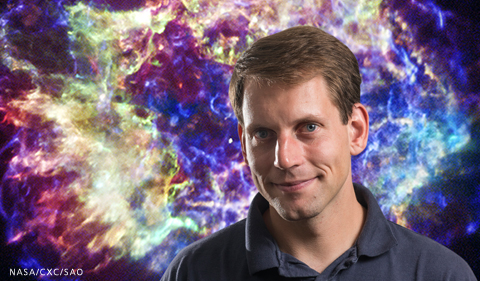
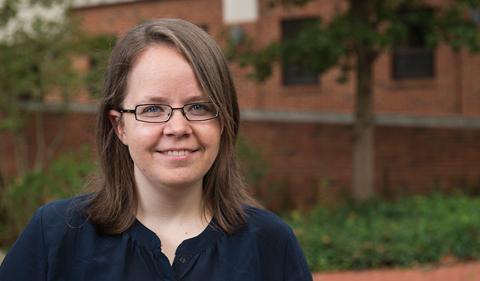
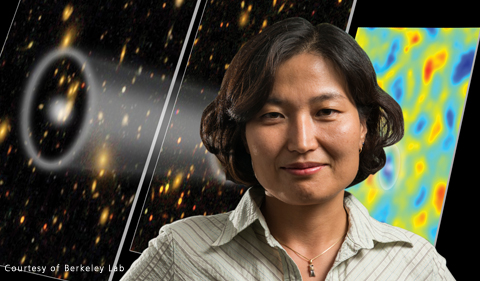

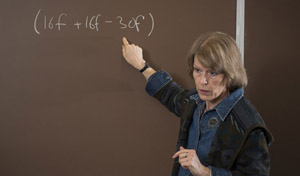
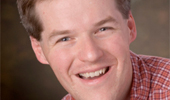














Comments